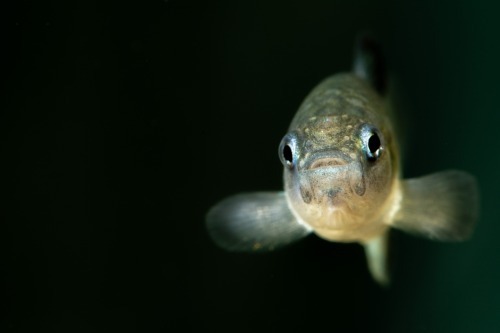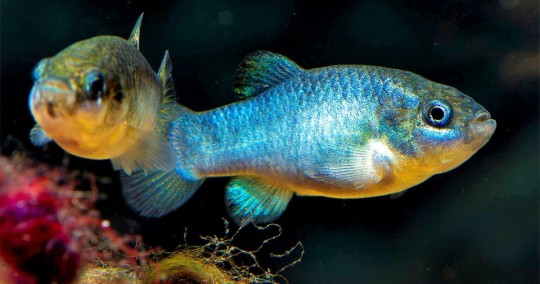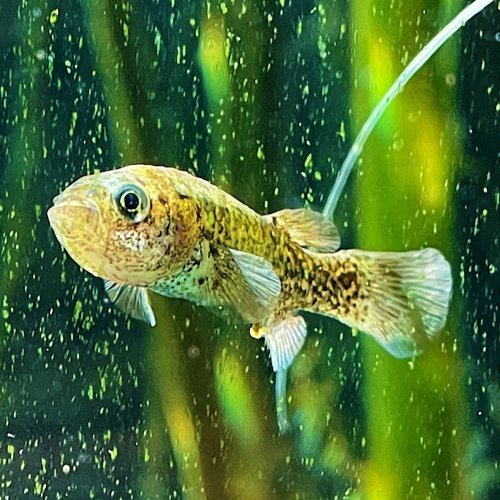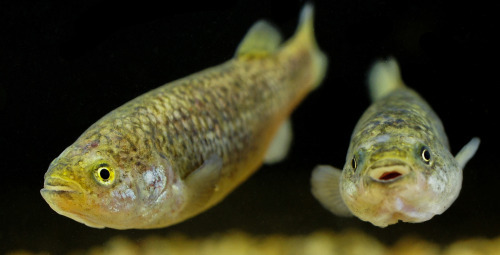#System Restore Management
Explore tagged Tumblr posts
Text
How to Free Up Space on Windows 10: A Comprehensive Guide
As your Windows 10 system accumulates more files and applications, it can start to slow down and become less efficient. Freeing up space not only improves your system’s performance but also extends its lifespan. In this guide, we’ll explore various methods to free up space on Windows 10, going beyond the basics to ensure you have a well-optimized system.

Table of Contents
Introduction
Understanding Disk Space Usage
Utilizing Built-in Windows Tools
Disk Cleanup
Storage Sense
Uninstalling Unnecessary Applications
Managing Temporary and Cached Files
Cleaning Up System Files
Windows Update Cleanup
System Restore and Shadow Copies
Using Third-Party Disk Cleaners
Handling Large Files and Folders
Moving Data to External Storage
Using Cloud Storage Solutions
Conclusion
1. Introduction
As modern software and files grow larger, managing disk space effectively becomes crucial. This guide offers practical steps and tips to reclaim disk space on your Windows 10 computer, ensuring it runs smoothly and efficiently.
2. Understanding Disk Space Usage
Before freeing up space, it’s essential to understand how your disk space is being used. Navigate to Settings > System > Storage to view a detailed breakdown. This will help identify which areas need attention.
3. Utilizing Built-in Windows Tools
Disk Cleanup
Windows 10 features a built-in Disk Cleanup tool designed to delete unnecessary files. To access it:
Type “Disk Cleanup” in the search bar and select the app.
Choose the drive you want to clean.
Select the file types to delete (e.g., temporary files, system cache).
Storage Sense
Storage Sense automates disk cleanup. To enable it:
Go to Settings > System > Storage.
Toggle on Storage Sense and configure settings to regularly delete temporary files.
4. Uninstalling Unnecessary Applications
Unused applications take up significant space. To uninstall them:
Go to Settings > Apps > Apps & features.
Review the list and uninstall non-essential programs.
5. Managing Temporary and Cached Files
Temporary files can quickly accumulate and consume disk space. Use Disk Cleanup or third-party tools to regularly clear these files. Browsers also store cached data, which can be cleared from the browser settings.
6. Cleaning Up System Files
Windows Update Cleanup
Old update files can take up substantial space. Disk Cleanup includes an option to remove these:
Open Disk Cleanup and select Clean up system files.
Choose Windows Update Cleanup.
System Restore and Shadow Copies
System Restore points and shadow copies can consume significant disk space. Manage these by:
Typing “System Protection” in the search bar.
Selecting the drive and clicking Configure.
Adjusting the Max Usage slider to limit space usage.
7. Using Third-Party Disk Cleaners
Third-party tools like CCleaner provide more comprehensive cleaning options. They can remove junk files, clean registries, and manage startup programs to free up space.
8. Handling Large Files and Folders
Identifying and managing large files is crucial. Use tools like WinDirStat to find large files and folders. Consider moving non-essential large files to external storage.
9. Moving Data to External Storage
Free up space by moving data such as videos, photos, and documents to external hard drives or USB sticks. Ensure you regularly back up important data to avoid loss.
10. Using Cloud Storage Solutions
Cloud storage services like OneDrive, Google Drive, and Dropbox offer substantial space. Move infrequently accessed files to the cloud to save local disk space.
11. Conclusion
Regular maintenance and mindful storage practices can keep your Windows 10 system running efficiently. Use the tips and tools outlined in this guide to manage and optimize your disk space effectively.
External Authoritative Sources
Microsoft Support: Free up drive space in Windows
CCleaner Official Website
How-To Geek: The Ultimate Guide to Freeing Up Space on Your Windows PC
By following these detailed steps, you can efficiently manage and optimize your disk space on Windows 10, ensuring your system remains fast and reliable.
#Windows 10 Performance#Disk Cleanup#Storage Management#System Optimization#PC Maintenance#Free Up Space#Windows 10 Tips#Specific Techniques:#Disk Cleanup Tool#Storage Sense#Uninstall Programs#Temporary File Management#System File Cleanup#Third-Party Disk Cleaners#Advanced Techniques:#Large File Management#External Storage Solutions#Cloud Storage for Windows#System Restore Management#Windows Update Cleanup#How-To Guide#Windows 10 Efficiency
2 notes
·
View notes
Text
that poem that goes like "and that you two keep silent and the silence gets delicious. and that one of you two talk and the listening gets delicious." well i had a taste of that today!
#my posts#i'm being so normal about it i promise#we sat in a coffeeshop and talked for two hours which was our first ever proper conversation tho i see them in passing a lot#we somehow managed to cover: both of our life histories + restoration ecology + alcoholism & sobriety + divorce + food systems work#they look at me like we have an inside joke and it makes me melt#i'm soooooooo.
15 notes
·
View notes
Text
Optimizing Sleep for ME/CFS: Strategies for Restorative Rest and Well-being
Improving Sleep Quality for Individuals with ME/CFS Living with ME/CFS presents unique challenges, especially when it comes to achieving restorative sleep. Good sleep hygiene is essential for managing symptoms and enhancing overall well-being. Here, we explore various strategies to improve sleep quality for those with ME/CFS, including maintaining proper sleep hygiene, maximizing deep sleep,…
#chronic fatigue syndrome#Consistent Sleep Schedule#Deep Sleep#Energy Levels#Fatigue management#Health and Wellness#Improving Sleep#Managing ME/CFS Symptoms#ME/CFS#Parasympathetic Nervous System#Relaxation techniques#Restful Sleep#Restorative Sleep#Sleep Continuity#Sleep Environment#Sleep Hygiene#Sleep Quality#Sleep Strategies#Sleep Tips#well-being
2 notes
·
View notes
Text
The Urgency of National Wildlife Week: A Call to Action for Biodiversity Preservation

View On WordPress
#advocacy#afforestation#afforestation areas#biodiversity#Buddy System#Citizen Science#citizen scientists#City Nature Challenge Events#Climate Action#climate change#Community Empowerment#Community Engagement#conservation#conservation awareness#Conservation Efforts#conservation initiatives#Eco-Quest Projects#ecological balance#Ecological preservation#Ecological Restoration#ecosystem health#Ecosystem Restoration#endangered species#Energy Use#environmental awareness#environmental challenges#environmental conservation#Environmental Education#environmental impact#Environmental Management
5 notes
·
View notes
Text
Jul 9, 2025
The Flint water crisis began in 2014, after lead-contaminated drinking water was found to be leaching out from aging pipes into homes citywide.
The American Civil Liberties Union and the Natural Resources Defense Council, with help from other activists and nonprofits, have released statements on the recent progress, celebrating the milestone.
The statements which they chalk up the crisis to “cost-cutting measures and improper water treatment,” that the state “didn’t require treatment to prevent corrosion,” after a “a state-appointed emergency manager” switched the water supply to the Flint River.
There is no safe level of lead exposure; each nanogram causes harm. In addition to long-known risks, such as damage to children’s brains and certain cancers, there is also significant evidence that exposure to lead is linked to numerous cardiovascular diseases, including stroke and heart attack.
The coalition mobilized the citizenry and filed a lawsuit against Flint and Michigan state officials to secure safe water. The result was a settlement in March 2017, under which a federal court in Detroit ordered Flint to give every resident the opportunity to have their lead pipe replaced at no cost, as well as conduct comprehensive tap water testing, implement a faucet filter distribution and education program, and maintain funding for health programs to help residents deal with the effects of Flint’s tainted water, according to the NRDC.
The coalition then returned to court six times in six years to ensure the city and state kept to the timeline, which was delayed by COVID-19, and other reasons which The Detroit News described as “spotty record-keeping” and “ineffective management.”
On July 1st, the State of Michigan submitted a progress report to a federal court confirming that, more than eight years after the settlement, nearly 11,000 lead pipes were replaced and more than 28,000 properties were restored where the maintenance had taken place.
Of the 4,200 buildings where lead pipes are known to still be in service, their owners have either left the properties vacant, abandoned, or have declined the free replacement under the Safe Water Drinking Act. The coalition has said it will continue to monitor city and state progress on these remaining lines.
“Thanks to the persistence of the people of Flint and our partners, we are finally at the end of the lead pipe replacement project,” said Pastor Allen C. Overton of the Concerned Pastors for Social Action, one of the organizations that sued the city. “While this milestone is not all the justice our community deserves, it is a huge achievement.”
#good news#flint michigan#clean water#water pollution#environmental justice#usa#infrastructure#michigan#science#environment#water#mni wiconi#drinking water#lead poisoning#social justice
22K notes
·
View notes
Text
Healer for the Healers ✨
Some of us are called to hold others through their hardest moments.
To guide. To witness. To carry light.
And sometimes… we need holding too.
I serve the ones who serve—spiritual guides, caregivers, parents, first responders, empaths and practitioners.
The ones who show up with love, even when their own cup is low.
You deserve space to rest. To be seen. To be supported without having to explain it all first.
That’s why I offer sacred sessions through ShaaniCreates and Healing through Visions.
Strategic support. Energetic nourishment. Realignment.
Explore more by reading the full post at ShaaniCreates.com/healer-for-the-healers/
And book your session at ShaaniCreates.com/appointments
Your care matters, too. Your restoration is part of the work. You’re worthy of the same presence you give others. ✨

#Accountability Coaching#Ancestral Healing#Body Doubling#Caregiver Wellness#Clarity Sessions#Conscious Leadership#Creative Productivity#Divine Alignment#Emotional Regulation#Empowerment Sessions#Energy Alignment#Energy Management#First Responder Support#Guardian Support#Healer Support#Healing Modalities#Healing through Visions#Healthcare Practitioner Wellness#Holistic Wellness#Intuitive Coaching#Intuitive Guidance#Life Alignment#Meditation and Breathwork#Nervous System Reset#Parent Support#Personal Development#Personal Transformation#Recalibration Sessions#Restorative Practices#Sacred Strategy
0 notes
Text
Revolutionizing Water Management: The Best Wastewater Recycling Company in Pune

Water is one of our most precious resources, and with growing environmental concerns, efficient water management has become a necessity. Pune, a city known for its innovation and sustainability, is home to some of the best wastewater recycling companies.
Whether you’re looking for the best wastewater recycling company in Pune, exploring water treatment services, considering a water recycling system, or curious about the process of water treatment plants, this guide will help you understand how these services can make a difference.
Let’s dive into the world of water recycling and treatment.
Why Choose a Wastewater Recycling Company in Pune?
Pune is a rapidly growing city, and with urbanization comes the challenge of managing water resources effectively. The best wastewater recycling companies in Pune are leading the way in sustainable water management by offering advanced solutions for recycling and treating wastewater.
These companies not only help conserve water but also reduce the environmental impact of wastewater disposal.
Best Wastewater Recycling Company in Pune
When it comes to wastewater recycling, choosing the best wastewater recycling company in Pune is crucial. These companies use cutting-edge technology and innovative methods to treat and recycle wastewater, making it safe for reuse.
I had the opportunity to visit one of the top wastewater recycling companies in Pune, and I was impressed by their commitment to sustainability. From industrial wastewater to domestic sewage, they offered tailored solutions to meet diverse needs.
Highlights of the Best Wastewater Recycling Company in Pune
Advanced Technology: State-of-the-art systems for efficient wastewater treatment.
Custom Solutions: Tailored services for industries, communities, and households.
Sustainability: A focus on reducing water wastage and promoting reuse.
Water Treatment Services
Water treatment services are essential for ensuring that water is safe for consumption, industrial use, or irrigation. These services include filtration, disinfection, and purification processes that remove contaminants from water.
During my research, I learned that the best wastewater recycling companies in Pune offer comprehensive water treatment services. Whether it’s treating groundwater, surface water, or wastewater, these companies ensure that the water meets quality standards.
Highlights of Water Treatment Services
Filtration: Removes impurities and particles from water.
Disinfection: Eliminates harmful bacteria and viruses.
Purification: Makes water safe for drinking or industrial use.
Water Recycling System

A water recycling system is designed to treat and reuse wastewater, reducing the demand for fresh water. These systems are particularly beneficial for industries, agriculture, and urban areas facing water scarcity.
I spoke to a business owner in Pune who had installed a water recycling system from one of the top companies. He shared how the system not only reduced his water bills but also helped his business comply with environmental regulations.
Highlights of Water Recycling Systems
Efficiency: Treats and reuses wastewater effectively.
Cost-Effective: Reduces the need for freshwater, saving money in the long run.
Eco-Friendly: Minimizes water wastage and environmental impact.
Treatment Plant of Water
A treatment plant of water is a facility where wastewater is treated to remove contaminants and make it safe for reuse or disposal. These plants play a crucial role in maintaining water quality and protecting the environment.
I visited a water treatment plant in Pune and was amazed by the complex yet efficient processes involved. From screening and sedimentation to biological treatment and disinfection, every step was meticulously planned to ensure the best results.
Highlights of Water Treatment Plants
Comprehensive Process: Includes physical, chemical, and biological treatment methods.
Scalability: Can be designed for small communities or large industries.
Environmental Protection: Prevents pollution of natural water bodies.
Process of Water Treatment Plant
Understanding the process of water treatment plants can help you appreciate the effort that goes into making water safe for reuse. Here’s a simplified breakdown of the process:
Screening: Removes large debris and particles from the wastewater.
Sedimentation: Allows suspended solids to settle at the bottom.
Biological Treatment: Uses microorganisms to break down organic matter.
Filtration: Removes remaining impurities through sand or membrane filters.
Disinfection: Kills harmful bacteria and viruses using chlorine or UV light.
Recycling: Treated water is reused for irrigation, industrial processes, or other non-potable purposes.
Tips for Choosing the Right Wastewater Recycling Company
Technology: Look for companies that use advanced and proven technologies.
Experience: Choose a company with a track record of successful projects.
Customization: Ensure they offer solutions tailored to your specific needs.
Sustainability: Opt for companies that prioritize eco-friendly practices.
Support: Check if they provide maintenance and after-sales services.
Most Popular FAQs About Wastewater Recycling
Here are some common questions I had before my research, along with the answers I found helpful:
What is wastewater recycling?Wastewater recycling involves treating used water to remove contaminants so it can be reused for various purposes.
Why is wastewater recycling important?It helps conserve water, reduce pollution, and meet the growing demand for clean water.
What services do water treatment companies offer?They offer services like filtration, disinfection, purification, and wastewater recycling.
How does a water recycling system work?A water recycling system treats wastewater through processes like filtration and disinfection, making it safe for reuse.
What is the process of a water treatment plant?The process of water treatment plants includes screening, sedimentation, biological treatment, filtration, and disinfection.
Can treated wastewater be used for drinking?While treated wastewater is safe for non-potable uses, it usually requires additional treatment for drinking purposes.
How do I choose the best wastewater recycling company in Pune?Look for companies with advanced technology, experienced teams, and a focus on sustainability.
Final Thoughts

The best wastewater recycling company in Pune can help you make a significant impact on water conservation and environmental sustainability. Whether you’re exploring water treatment services, installing a water recycling system, or learning about the process of water treatment plants, these solutions are essential for a sustainable future.
So take the first step towards responsible water management. Choose the right company, invest in efficient systems, and contribute to a greener tomorrow. If you have any questions or need guidance, feel free to ask. Together, we can make a difference!
#water damage restoration#water purifier#water treatment plant#water treatment solutions#water treatment systems#water treatment chemicals market#wastewater management#wastewater#water treatment services#water purifying plant
0 notes
Text

Alarm Management Software
#Alarm Management Application#Alarm Management Software#Industrial Alarm Management Application#Industrial Alarm by SMS#OPC Alarm by SMS#OPC alarm notification software#MSSQL Backup Utility#SQL Server Backup#SQL Backup and Restore Utility#MSSQL Data Truncate#Data Backup and Restore#Database Backup#Database Backup and Restore Utility#opc alarms by SMS applications Alarms by SMS#sql alarms by SMS application#Digital Alarms by SMS#digital alarms by SMS application#Analog Alarms by SMS#analog alarms by SMS application#SMS Alarm SCADA#SMS Alarm SCADA system
0 notes
Text
Relax, Rejuvenate, and Restore at Heyue Massage in East Geelong
Are you feeling stressed, tired, or burdened by muscle aches? It’s time to experience the healing touch of Heyue Massage in East Geelong. We specialize in delivering the ultimate relaxation and relief through our professional massage therapy services tailored to your individual needs.
Why Choose Heyue Massage? At Heyue Massage, we are committed to enhancing your well-being by offering a wide range of therapeutic treatments designed to relax your body, rejuvenate your mind, and restore your energy. Here's what makes us stand out:
1.Expert Therapists Our skilled massage therapists are trained to provide a variety of techniques, ensuring every session is a personalized experience.
Comprehensive Services Whether you need a deep tissue massage to relieve muscle tension, a remedial massage for pain management, or a relaxation massage to unwind, we’ve got you covered.
Convenient Location Located in the heart of East Geelong, Heyue Massage is your go-to destination for quick and effective wellness solutions.
Our Signature Treatments
Relaxation Massage: Drift away in a state of bliss as our therapists ease away your stress.
Deep Tissue Massage: Perfect for tackling persistent aches and sore muscles.
Remedial Massage: A therapeutic approach to address specific health concerns and promote recovery.
Benefits of Regular Massage Therapy Massage isn’t just a luxury; it’s an essential part of self-care. Regular sessions can:
Relieve stress and anxiety
Improve blood circulation
Boost your immune system
Enhance flexibility and mobility
Promote better sleep
Book Your Experience Today Heyue Massage in East Geelong is dedicated to providing a sanctuary where you can relax, rejuvenate, and restore balance to your life. Whether you're treating yourself or looking to address a specific issue, we’re here to help.
Address - Shop 8/136 Ormond Rd, East Geelong VIC 3219 Contact us - 488 998 090
Heyue Massage,#Massage Therapy,#Relaxation Massage, #Remedial Massage,#Deep Tissue Massage,#Soothing Massages,#East Geelong Massage,#Muscle Relief Massage,#Professional Massage Services,#Massage Near Me,#Body Wellness,#Stress Relief,#Pain Management,#Rejuvenation Massage,#Full Body Massage, #Traditional Massage Techniques
#Are you feeling stressed#tired#Why Choose Heyue Massage?#At Heyue Massage#we are committed to enhancing your well-being by offering a wide range of therapeutic treatments designed to relax your body#rejuvenate your mind#and restore your energy. Here's what makes us stand out:#1.Expert Therapists#Our skilled massage therapists are trained to provide a variety of techniques#ensuring every session is a personalized experience.#2. Comprehensive Services#Whether you need a deep tissue massage to relieve muscle tension#a remedial massage for pain management#or a relaxation massage to unwind#we’ve got you covered.#3. Convenient Location#Located in the heart of East Geelong#Heyue Massage is your go-to destination for quick and effective wellness solutions.#Our Signature Treatments#- Relaxation Massage: Drift away in a state of bliss as our therapists ease away your stress.#- Deep Tissue Massage: Perfect for tackling persistent aches and sore muscles.#- Remedial Massage: A therapeutic approach to address specific health concerns and promote recovery.#Benefits of Regular Massage Therapy#Massage isn’t just a luxury; it’s an essential part of self-care. Regular sessions can:#- Relieve stress and anxiety#- Improve blood circulation#- Boost your immune system#- Enhance flexibility and mobility#- Promote better sleep#Book Your Experience Today
0 notes
Text
Although dam removals have been happening since 1912, the vast majority have occurred since the mid-2010s, and they have picked up steam since the 2021 Bipartisan Infrastructure Law, which provided funding for such projects. To date, 806 Northeastern dams have come down, with hundreds more in the pipeline. Across the country, 2023 was a watershed year, with a total of 80 dam removals. Says Andrew Fisk, Northeast regional director of the nonprofit American Rivers, “The increasing intensity and frequency of storm events, and the dramatically reduced sizes of our migratory fish populations, are accelerating our efforts.”
Dam removals in the Northeast don’t generate the same media attention as massive takedowns on West Coast rivers, like the Klamath or the Elwha. That’s because most of these structures are comparatively miniscule, built in the 19th century to form ponds and to power grist, textile, paper, saw, and other types of mills as the region developed into an industrial powerhouse.
But as mills became defunct, their dams remained. They may be small to humans, but to the fish that can’t get past them “they’re just as big as a Klamath River dam,” says Maddie Feaster, habitat restoration project manager for the environmental organization Riverkeeper, based in Ossining, New York. From Maryland and Pennsylvania up to Maine, there are 31,213 inventoried dams, more than 4,000 of which sit within the 13,400-square-mile Hudson River watershed alone. For generations they’ve degraded habitat and altered downstream hydrology and sediment flows, creating warm, stagnant, low-oxygen pools that trigger algal blooms and favor invasive species. The dams inhibit fish passage, too, which is why the biologists at the mouth of the Saw Kill transported their glass eels past the first of three Saw Kill dams after counting them...
Jeremy Dietrich, an aquatic ecologist at the New York State Water Resources Institute, monitors dam sites both pre- and post-removal. Environments upstream of an intact dam, he explains, “are dominated by midges, aquatic worms, small crustaceans, organisms you typically might find in a pond.” In 2017 and 2018 assessments of recent Hudson River dam removals, some of which also included riverbank restorations to further enhance habitat for native species, he found improved water quality and more populous communities of beetles, mayflies, and caddisflies, which are “more sensitive to environmental perturbation, and thus used as bioindicators,” he says. “You have this big polarity of ecological conditions, because the barrier has severed the natural connectivity of the system. [After removal], we generally see streams recover to a point where we didn’t even know there was a dam there.”

Pictured: Quassaick Creek flows freely after the removal of the Strooks Felt Dam, Newburgh, New York.
American Rivers estimates that 85 percent of U.S. dams are unnecessary at best and pose risks to public safety at worst, should they collapse and flood downstream communities. The nonprofit has been involved with roughly 1,000 removals across the country, 38 of them since 2018. This effort was boosted by $800 million from the Bipartisan Infrastructure Law. But states will likely need to contribute more of their own funding should the Trump administration claw back unspent money, and organizations involved in dam removal are now scrambling to assess the potential impact to their work.
Enthusiasm for such projects is on the upswing among some dam owners — whether states, municipalities, or private landholders. Pennsylvania alone has taken out more than 390 dams since 1912 — 107 of them between 2015 and 2023 — none higher than 16 feet high. “Individual property owners [say] I own a dam, and my insurance company is telling me I have a liability,” says Fisk. Dams in disrepair may release toxic sediments that potentially threaten both human health and wildlife, and low-head dams, over which water flows continuously, churn up recirculating currents that trap and drown 50 people a year in the U.S.
Numerous studies show that dam removals improve aquatic fish passage, water quality, watershed resilience, and habitat for organisms up the food chain, from insects to otters and eagles. But removals aren’t straightforward. Federal grants, from the National Oceanic and Atmospheric Administration or the Fish and Wildlife Service, favor projects that benefit federally listed species and many river miles. But even the smallest, simplest projects range in cost from $100,000 to $3 million. To qualify for a grant, be it federal or state, an application “has to score well,” says Scott Cuppett, who leads the watershed team at the New York State Department of Environmental Conservation’s Hudson River Estuary Program, which collaborates with nonprofits like Riverkeeper to connect dam owners to technical assistance and money...

All this can be overwhelming for dam owners, which is why stakeholders hope additional research will help loosen up some of the requirements. In 2020, Yellen released a study in which he simulated the removal of the 1,702 dams in the lower Hudson watershed, attempting to determine how much sediment might be released if they came down. He found that “the vast majority of dams don’t really trap much sediment,” he says. That’s good news, since it means sediment released into the Hudson will neither permanently worsen water quality nor build up in places that would smother or otherwise harm underwater vegetation. And it shows that “you would not need to invest a huge amount of time or effort into a [costly] sediment management plan,” Yellen says. It’s “a day’s worth of excavator work to remove some concrete and rock, instead of months of trucking away sand and fill.” ...
On a sunny winter afternoon, Feaster, of Riverkeeper, stands in thick mud beside Quassaick Creek in Newburgh, New York. The Strooks Felt Dam, the first of seven municipally owned dams on the lower reaches of this 18-mile tributary, was demolished with state money in 2020. The second dam, called Holden, is slated to come down in late 2025. Feaster is showing a visitor the third, the Walsh Road Dam, whose removal has yet to be funded. “This was built into a floodplain,” she says, “and when it rains the dam overflows to flood a housing complex just around a bend in the creek.” ...
On the Quassaick, improvements are evident since the Strooks dam came out. American eel and juvenile blue crabs have already moved in. In fact, fish returns can sometimes be observed within minutes of opening a passageway. Says Schmidt, “We’ve had dammed rivers where you’ve been removing the project and when the last piece comes out a fish immediately storms past it.”
There is palpable impatience among environmentalists and dam owners to get even more removals going in the Northeast. To that end, collaborators are working to streamline the process. The Fish and Wildlife Service, for example, has formed an interagency fish passage task force with other federal agencies, including NOAA and FEMA, that have their own interests in dam removals. American Rivers is working with regional partners to develop priority lists of dams whose removals would provide the greatest environmental and safety benefits and open up the most river miles to the most important species. “We’re not going to remove all dams,” [Note: mostly for reasons dealing with invasive species management, etc.] says Schmidt. “But we can be really thoughtful and impactful with the ones that we do choose to remove.”
-via Yale Environment 360, February 4, 2025
#rivers#riparian#united states#north america#northeast#pennsylvania#massachusetts#new york#dam#dam removal#good news#hope
1K notes
·
View notes
Text
Amazon Relation Database Service RDS Explained for Cloud Developers
Full Video Link - https://youtube.com/shorts/zBv6Tcw6zrU Hi, a new #video #tutorial on #amazonrds #aws #rds #relationaldatabaseservice is published on #codeonedigest #youtube channel. @java @awscloud @AWSCloudIndia @YouTube #youtube @codeonedig
Amazon Relational Database Service (Amazon RDS) is a collection of managed services that makes it simple to set up, operate, and scale relational databases in the cloud. You can choose from seven popular engines i.e., Amazon Aurora with MySQL & PostgreSQL compatibility, MySQL, MariaDB, PostgreSQL, Oracle, and SQL Server. It provides cost-efficient, resizable capacity for an industry-standard…

View On WordPress
#amazon rds access from outside#amazon rds aurora#amazon rds automated backup#amazon rds backup#amazon rds backup and restore#amazon rds guide#amazon rds snapshot export to s3#amazon rds vs aurora#amazon web services#aws#aws cloud#aws rds aurora tutorial#aws rds engine#aws rds explained#aws rds performance insights#aws rds tutorial#aws rds vs aurora#cloud computing#relational database#relational database management system#relational database service
1 note
·
View note
Text
Top 20 Technical Support Interview Questions and Answers for Freshers in IT
When applying for a technical support role in the IT industry, preparation is key to success. To help freshers ace their technical support interviews, we’ve compiled a comprehensive list of 20 common interview questions along with sample answers. These questions cover a wide range of technical topics and soft skills necessary for excelling in a technical support role. What does technical support…

View On WordPress
#Antivirus#BIOS Update#Blue Screen of Death#DHCP#DNS#Firewall#Internet Connectivity#Interview questions#IP Address#IT Troubleshooting#Malware Protection#NAT#Network Security#Patch Management#Router#Subnetting#Switch#System Restore#Technical Support#Technology Trends#VPN
0 notes
Video
youtube
These are our main products: rainwater harvesting system modular tanks.
#youtube#modular tank#module#water storage tanks#rainwater harvesting#rainwater collection#rain water management#water reservoir#water rescue#water restoration#water cistern#underground pool#underground pond#modular tank system#rainwater harvesting system
0 notes
Text
In the Quiet of Healing: My Journey with the Parasympathetic Nervous System
Healing Through Rest: How the Parasympathetic Nervous System Can Support Recovery from Chronic Fatigue Syndrome In the aftermath of the recent hurricanes, Helene and Milton, I’ve felt post-exertional malaise weigh heavily on my body. The fatigue has been more than just physical—it’s emotional and mental, a deep, enveloping weariness that reminds me how fragile recovery can be. As I continue to…
#breathwork for fatigue#calming the nervous system#chronic fatigue strategies#chronic fatigue syndrome#chronic illness recovery#deep rest techniques#energy conservation#Feldenkrais Method#fight or flight response#gentle movement practices#healing from hurricanes#healing through rest#health#holistic healing#Managing chronic fatigue#ME/CFS#meditation#mental health and chronic fatigue#mindfulness for fatigue#nervous system regulation#pacing for chronic illness#Parasympathetic Nervous System#post-exertional malaise#recovery from exhaustion#Relaxation techniques#restorative yoga#self-care for chronic illness#yoga#Yoga Nidra for healing
1 note
·
View note
Text
The Sixth Silent Mass Extinction: A Call to Action

View On WordPress
#American Kestrel#American white pelican#animal conservation#biodiversity#Biodiversity Conservation#biodiversity loss#Canadian Species at Risk Act#climate change#Climate Resilience#conservation#Conservation actions#Conservation Efforts#conservation policies#conservation science#Conservation Strategies#conservation successes#ecological functions#Ecological Impact#Ecological preservation#Ecological Restoration#ecological systems#ecosystem health#ecosystem management#Ecosystem Restoration#ecosystem services#endangered species#endangered wildlife#environmental challenges#environmental changes#environmental conservation
0 notes
Note
Got any Devil's Hole Pupfish and/or their less specialized relatives? I love the frustration they're causing land developers lol
Oh I have some Pupfish stuff for you...





GREAT NEWS! - Recovery efforts are paying off for the critically endangered Devils Hole pupfish.
This past April, scientists counted 175 pupfish! The last time numbers were this high during a spring count was 22 years ago. The fish are in “remarkable condition and very active,” according to Nevada Department of Wildlife supervisory fish biologist Brandon Senger. Devils Hole, located within Ash Meadows National Wildlife Refuge in Southern Nevada, is a water-filled, geothermal cave system containing carbonate-rich and oxygen-poor water. Water conditions here remain at a constant 93°F in deeper reaches of the cave, and it’s the only natural habitat for Devils Hole pupfish. “It’s just such a different species and it is remarkable that it has managed to survive,“ said our fish biologist Michael Schwemm. "It lacks pelvic fins due to the extreme conditions such as low food resources and high temperature, adapting to habitat conditions which have evolved over time.”
The story: http://ow.ly/nhz050JaB07

Pahrump Poolfish (Empetrichthys latos), Desert National Wildlife Refuge, NV, USA
Word of the day: refugium (ree·few·jee·um), or an area in which a population of organisms can survive through a period of unfavorable conditions. Here on the refuge, the critically endangered Pahrump Poolfish lives exclusively in a refugium. This small, guppy-like fish is extinct in the wild, after its original habitat was depleted due to groundwater pumping in the 1970s. You can find the refugium along the trails behind the Corn Creek Visitor Center.
Photographs: J. Contois / USFWS

Saving a Rare Desert Fish on the Brink of Extinction
Pahrump Poolfish (Empetrichthys latos) are being kept at the Nevada state fish hatchery as restoration efforts are under way to restore their home habitat.
There is a rare species of desert fish fighting for its survival in a fresh water pond in the desert landscape of southern Nevada – the Pahrump poolfish. According to biologists monitoring the tiny fish, one of the last remaining populations of the endangered Pahrump poolfish, Empetrichthys latos, is at an alarmingly low number, below 1,000, compared to the 10,000 recorded in 2015. Throughout the month of October 2016, U.S. Fish and Wildlife Service biologist James Harter and Nevada Department of Wildlife (NDOW) biologist Kevin Guadalupe are rescuing the Pahrump poolfish from Lake Harriett at Spring Mountain Ranch State Park outside of Las Vegas, Nevada, and moving them to the NDOW’s fish hatchery at the Lake Mead National Recreation Area. The poolfish are being taken to the hatchery to protect the species from extinction…
Read more: https://www.fws.gov/cno/newsroom/featured/2016/Pahrump_poolfish/
Photo Credit: Enrique Villar/USFWS



The Phenotypic Plasticity of Death Valley’s Pupfish
Desert fish are revealing how the environment alters development to modify body shape and behavior
by Sean C. Lema
Despite variety, most of the surface of Death Valley is dead … a land of jagged salt pillars, crackling and tortured crusts of mud, sunburnt gravel bars the color of rust, rocks and boulders of metallic blue naked even of lichen. As one of the world’s harshest desert regions, Death Valley is a land of eroding badlands, scorching alluvial fans, and barren flats of mud and salt. Yet hidden in remote corners of Death Valley live the desert pupfishes—several related species that survive in an archipelago of permanent water habitats scattered in a sea of desert. Death Valley’s pupfishes inhabit isolated springs, streams and marshes that are remnants of the region’s milder climate less than 20,000 years ago. Since that cooler and wetter time, pupfishes in this region have evolved from a common ancestor into nine closely related species and subspecies, with each taxon living in full geographic isolation from the others. Death Valley’s pupfishes are thus a little like the well-known Darwin’s finches of the Galapagos Islands, in that they offer an opportunity to watch the process of evolution in action…
(read more: American Scientist)
photographs: Sean C. Lema and NPS
951 notes
·
View notes